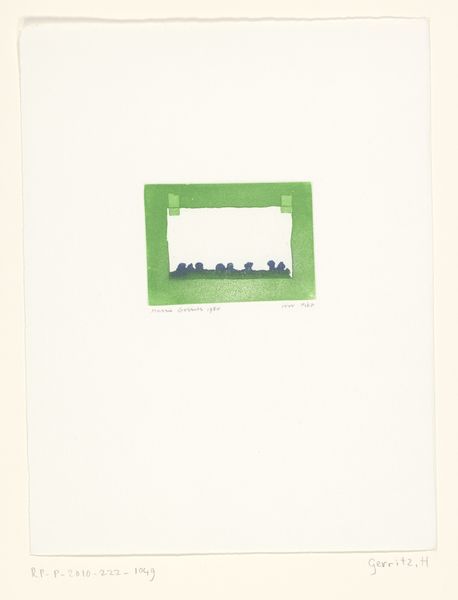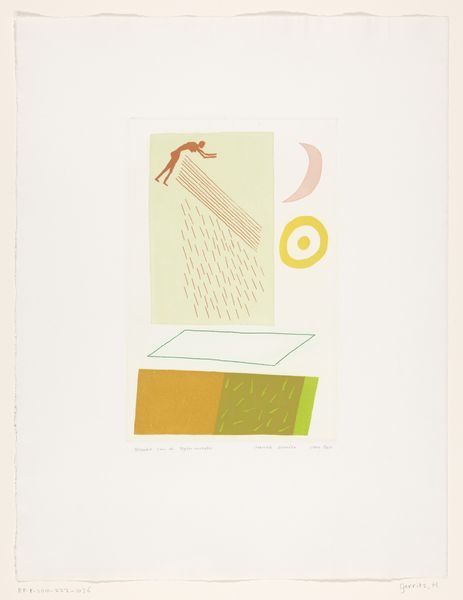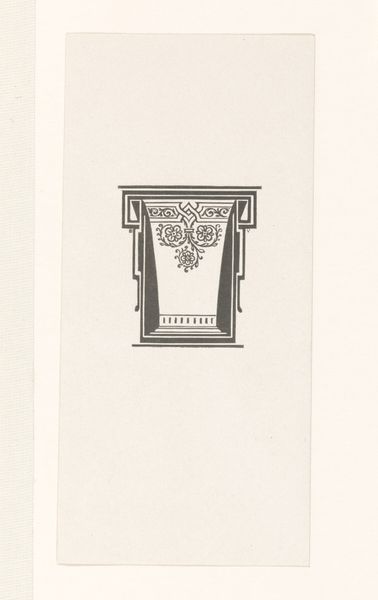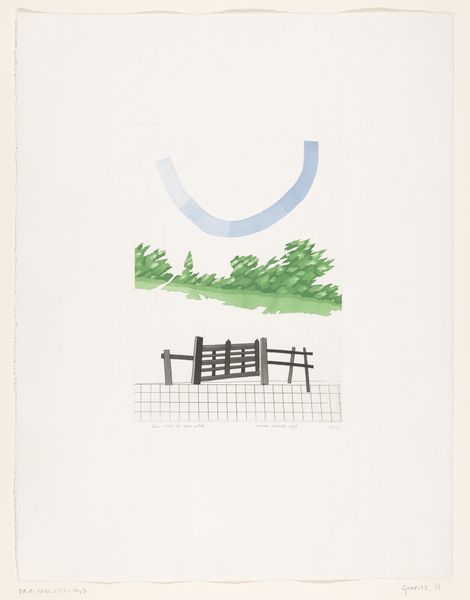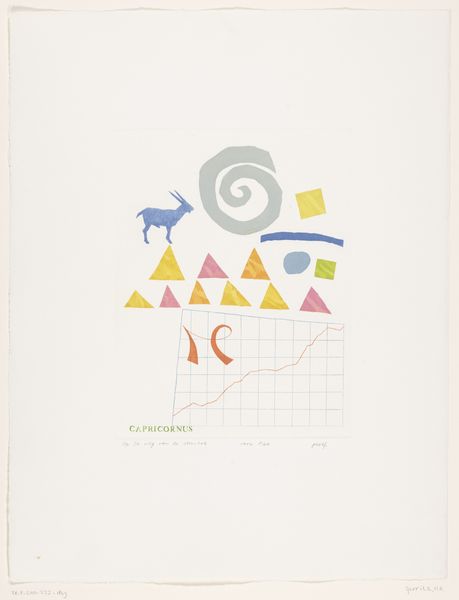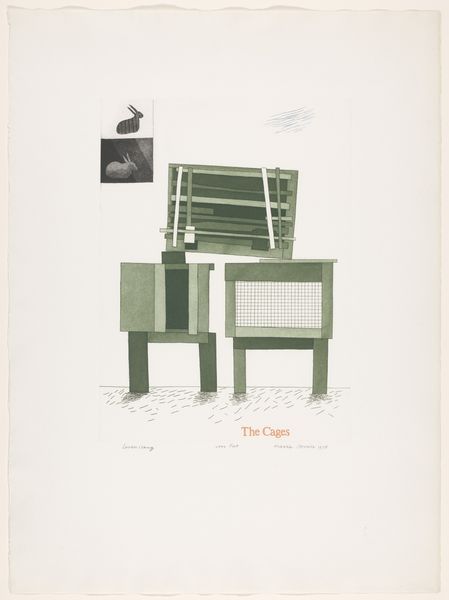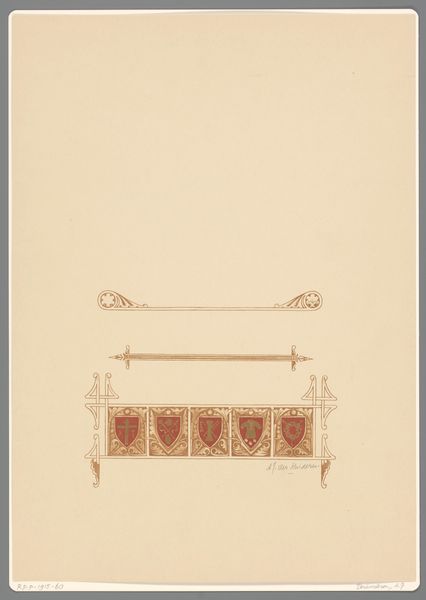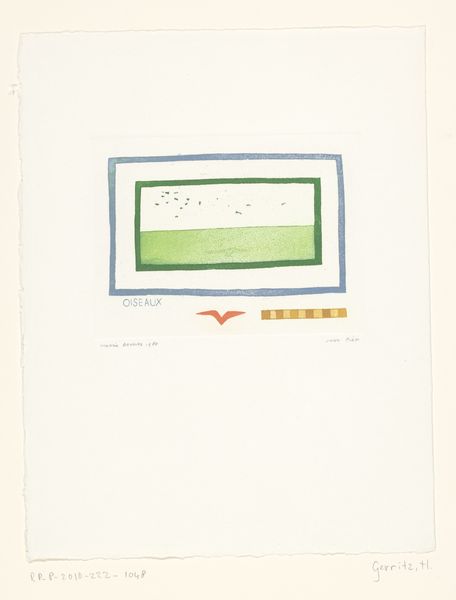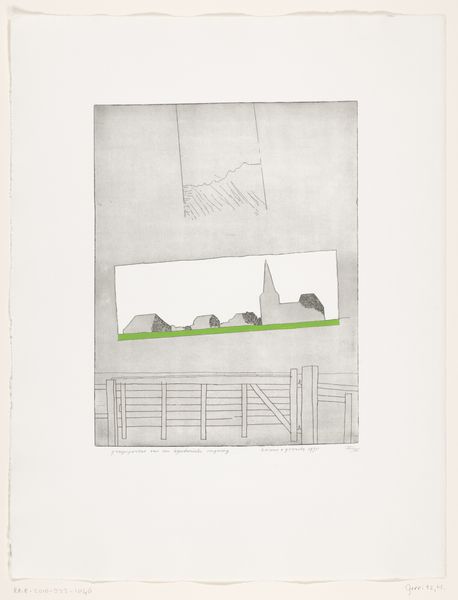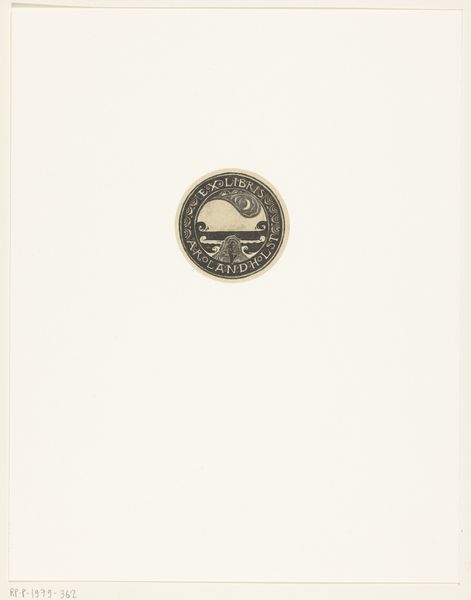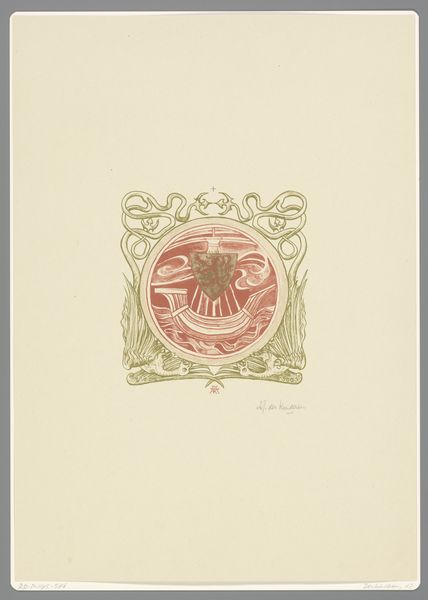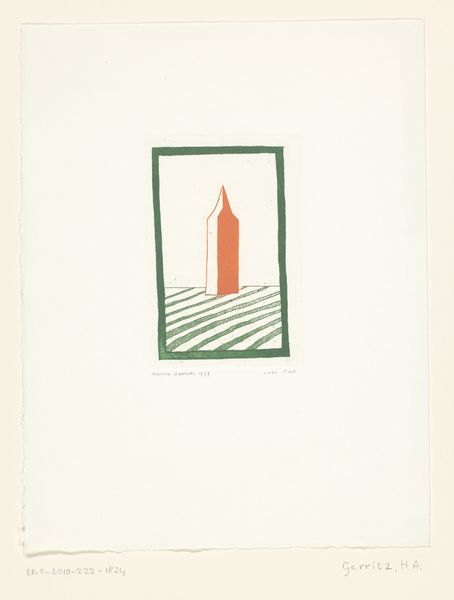
print, etching
#
contemporary
# print
#
etching
#
etching
#
geometric
#
line
Dimensions: height 655 mm, width 505 mm, height 297 mm, width 235 mm
Copyright: Rijks Museum: Open Domain
Curator: Oh, it feels…sparse. Deliberately so. There's something about the loneliness of these lines, just scratching their way across the emptiness. What do you make of it? Editor: We're looking at Harrie A. Gerritz’s “Manifest,” an etching from 1979, now housed here at the Rijksmuseum. It's fascinating how this piece, seemingly so simple, speaks to the art world’s shifting interests during that period. Conceptual art was booming, and there was this move toward deconstructing traditional representation. Curator: Yes! Deconstruction. That's the echo I'm hearing. The "Manifest" in the title almost feels ironic, like it's a manifesto stripped bare. You have this skeletal temple thing balanced precariously over a fence... it is as if it is suggesting we decide what’s outside and what’s in. Editor: The gate in the foreground suggests exactly what? Boundaries and separations –ideas that, in 1979, were deeply entangled with Cold War anxieties. What looks minimal on the surface is really this subtle commentary on division, both physical and ideological. Curator: The limited colour palette and delicate lines in Gerritz’s etching adds a haunting mood, it pulls you in. A puzzle that insists that we, as viewers, breathe life into it, project our own narratives onto these minimal forms. I love that he trusted the viewer this way! Editor: Absolutely. And let's think about the institution's role in displaying it now. Placing "Manifest" in a museum like the Rijksmuseum—historically associated with Dutch national identity—it takes on this interesting layer. Does it critique that identity, or does its inclusion somehow legitimize it? Curator: See, that's where it gets juicy. It becomes part of the narrative whether it wants to or not, just by hanging on the wall. Makes you wonder if the artist considered the afterlife of the piece, its journey through galleries and into the eyes of strangers. Editor: A question that's always worth considering, isn't it? A work born in one moment but destined to resonate through countless others. Thank you, for giving context to what I was experiencing.
Comments
No comments
Be the first to comment and join the conversation on the ultimate creative platform.
